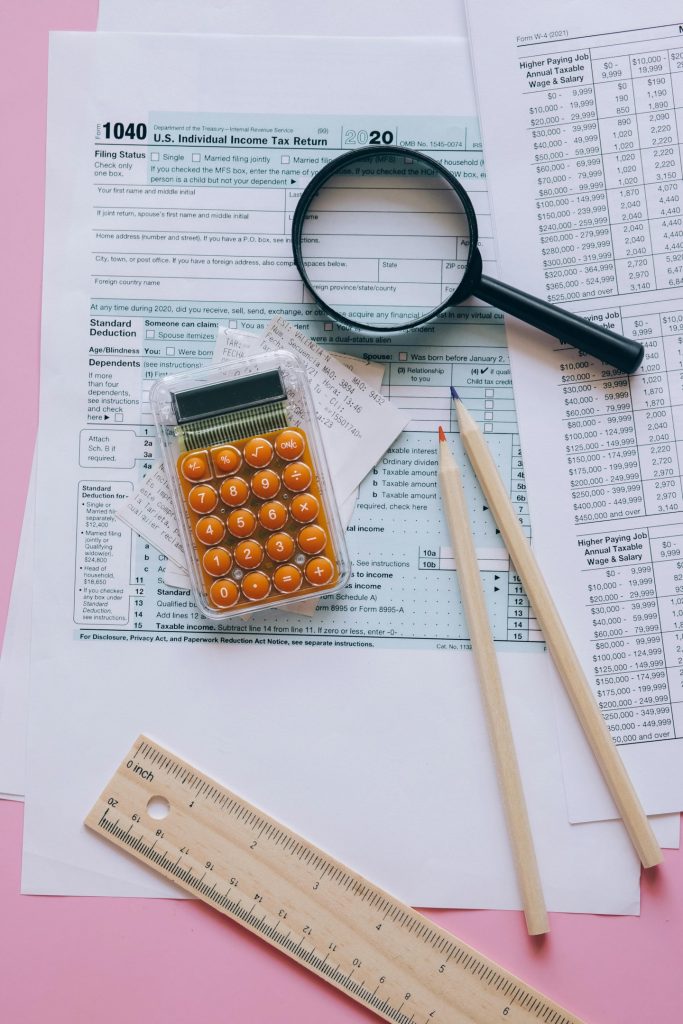Decluttering Digital Spaces: Techniques for Organizing Your Online Life and Reducing Digital Overwhelm

Digital Clutter: A Modern Challenge
In today’s hyper-connected world, digital clutter can feel just as overwhelming as physical mess. From overflowing email inboxes to chaotic file systems, our online lives often mirror the chaos of our homes. As more of our daily activities move into the digital realm, finding ways to regain control becomes essential. The importance of a streamlined digital presence cannot be overstated; it plays a significant role in our productivity, mental well-being, and overall digital security.
Imagine the tangible benefits of a well-organized digital space. For instance, increased productivity is a key advantage. According to a study by the University of California, Irvine, office workers spend approximately 28% of their workweek managing emails. By organizing your digital communications effectively, you can retrieve necessary documents quickly and focus your energy on impactful tasks.
Moreover, consider the mental clarity that accompanies decluttering your digital environment. Research has shown that visual distractions contribute to cognitive overload, which can reduce focus and increase stress. A decluttered digital space cultivates a sense of calm and makes it easier to concentrate on the work at hand. When you eliminate visual noise, you create an atmosphere conducive to critical thinking and creativity.
Improved security is another compelling reason to take charge of your digital space. A cluttered digital environment often leads to ineffective data management and neglect of crucial privacy settings. By simplifying your digital footprint, you can apply more vigilant security measures. This is particularly pertinent in the wake of increasing cyber threats, making your online safety a priority.
Getting Started with Digital Decluttering
As we navigate the complexities of modern technology, the need for effective decluttering techniques has never been greater. You may ask yourself, “Where do I even begin?” Start by addressing the most common sources of digital overwhelm:

- Email overload: With promotional emails and newsletters often crowding your inbox, consider implementing strategies such as categorizing your emails or utilizing tools like Unroll.me to manage subscriptions effectively.
- File organization: Techniques for systematic file storage and folder structuring can significantly reduce time spent searching. Creating a clear folder hierarchy based on project tags or time periods can streamline your document retrieval process immensely.
- Social media management: Curating your feeds to align with your interests and values can enhance your online experience. Regularly reviewing whom you follow and adjusting your notification settings can foster a more positive digital environment.
This article will guide you through the essential steps to organize your online life effectively. With practical insights and actionable tips, you can discover how to transform your digital spaces and reclaim your time, focus, and peace of mind. The journey to a decluttered digital world begins with just a few steps, leading to significant changes in your daily life.
DISCOVER MORE: Click here to learn about digital minimalism tools
Effective Strategies for Digital Decluttering
In order to tackle the pervasive issue of digital clutter, it’s essential to employ effective strategies that resonate with our daily lives. Implementing these techniques can significantly ease your digital burden and help streamline your online experiences. The journey towards a more organized digital existence starts with addressing each clutter source methodically.
1. Decluttering Your Email Inbox
Your email inbox is often the first port of call for digital clutter management. The sheer volume of emails received daily can quickly accumulate, leading to feelings of overwhelm. A practical first step is to conduct a thorough email audit. Start by unsubscribing from newsletters and promotional content that no longer serve your interests. Utilize tools like Unroll.me to simplify this process and consolidate your subscriptions into a daily digest. Furthermore, consider creating specific folders or labels for different types of emails—such as work, personal, and subscriptions—allowing for easier navigation and retrieval.
2. Streamlining Cloud Storage and Files
Just as a cluttered desk can impede productivity, a chaotic digital file system can hamper efficiency. Develop a comprehensive system for organizing your cloud storage. Implement a clear folder hierarchy, categorizing files by project, date, or purpose. For example, a typical structure may include top-level folders for “Work,” “Personal,” and “Projects.” Under these, you can create subfolders linked to specific topics or tasks. Consistent naming conventions—such as “YYYY-MM-DD_ProjectName” for documents—will enable you to access files swiftly, reducing the time spent on digital scavenger hunts.
3. Managing Social Media Noise
Social media platforms are notorious for contributing to digital overwhelm. Unfollow accounts that no longer align with your values or interests to cultivate a meaningful online experience. Regularly assessing your connections on platforms like Facebook or Instagram can help enhance your social feeds. Implement the practice of curating your online presence by prioritizing content that educates, inspires, or brings joy. Additionally, taking advantage of notification settings to limit alerts ensures you remain focused on the content that truly matters without constant distractions.
4. Utilizing Productivity Applications
Embrace technology that aids your organizational efforts. Task management applications such as Todoist, Trello, or Notion can serve as digital hubs for tracking projects and deadlines. These apps often allow for customizable interfaces and categorization, making your productivity system as unique as your workflow. Exploring automation features available in tools like Ifttt or Zapier can also drastically reduce repetitive tasks, enhancing your efficiency.
By implementing these strategies and incorporating them into your daily habits, you will not only mitigate digital overwhelm but will also foster a greater sense of control over your online life. The key to successful digital decluttering lies in continuous evaluation and adjustment of your digital habits.
| Category | Key Features |
|---|---|
| File Organization | Utilizing folders and subfolders to categorize important documents. |
| Digital Detox | Setting aside time regularly to disconnect from screens and refresh your mind. |
| Email Management | Implementing filters and labels to increase productivity and reduce email overload. |
| App Limitations | Restricting the number of apps on your devices to only essential ones for a clearer interface. |
In the realm of decluttering digital spaces, employing effective techniques can dramatically improve one’s online life and combat digital overwhelm. One pivotal method is to prioritize File Organization. By structurally categorizing documents into folders and subfolders, users can easily locate critical information without getting lost in a sea of files. This simple yet powerful approach saves time and reduces frustration.Another essential strategy is undergoing a Digital Detox. Allocating periods to step away from screens fosters mental clarity and rejuvenation, essential for maintaining focus in today’s fast-paced world. Integrating this practice can break the cycle of constant digital engagement.Email Management plays a significant role in streamlining communication. Utilizing filters and labels not only enhances productivity but also fosters a sense of control over one’s inbox. By implementing these techniques, individuals can reduce the stress associated with overwhelming email notifications.Lastly, by practicing App Limitations, users can enhance their interaction with technology. Capping the number of applications to essential ones allows for a more organized and less cluttered digital environment. These strategies collectively aid in fostering a serene and manageable online life, encouraging readers to delve deeper into each suggestion for a more organized digital existence.
DISCOVER MORE: Click here for the 5-step decluttering method
Further Techniques for Digital Minimalism
Having established a foundation for digital decluttering, it is essential to delve deeper into additional techniques that can promote digital minimalism. As our digital lives evolve, so do the strategies to streamline our online experiences. By embracing these innovative methods, you can cultivate a more serene online atmosphere that fosters focus and productivity.
5. Organizing Your Digital Calendar
Your digital calendar can be an ally or a source of chaos, depending on how you manage it. Regularly review and refine your calendar by eliminating duplicate events, outdated entries, and unnecessary reminders. Consider color-coding different areas of your life, such as work, personal commitments, and family activities, to enhance visual clarity. Applications like Google Calendar offer features for setting recurring events and alerts, ensuring important tasks do not fall through the cracks. Additionally, incorporate time-blocking methods to allocate dedicated periods for tasks, thereby reducing decision fatigue and enhancing your focus.
6. Assessing Your Digital Purchase Habits
Digital shopping can quickly spiral into clutter as online purchases accumulate across various platforms. It’s vital to assess your digital purchasing habits by introducing routines such as a monthly review of your online subscriptions and memberships. Many people overlook subscriptions they no longer use, which can lead to unnecessary financial stress and clutter. Tools like TrueBill can help manage your subscriptions by tracking charges and help you identify services you can live without. By consciously curating your purchases, you not only save money but also foster a mindset of intentionality.
7. Evaluating Stored Photos and Videos
Our devices often become repositories for countless photos and videos—many of which may hold little sentimental value. Conduct a digital photo audit every few months: go through your stored images and delete those that are blurry, duplicated, or no longer resonate with you. Cloud storage services like Google Photos offer organizational features, enabling you to create albums and utilize facial recognition capabilities to sort images efficiently. Making a habit of backing up meaningful photos monthly can also allow you to free up space without losing precious memories.
8. Practicing Digital Detoxes
A digital detox refers to taking a break from various digital devices and platforms to reset your mental space and reclaim your time. Consider implementing routine digital detoxes, such as tech-free weekends or specific hours during the day when you disconnect from electronics. This practice can expose how often you reach for screens out of habit rather than necessity. Many find that after a detox period, they emerge with renewed energy to engage more mindfully with their devices and reshape their online habits.
As you explore these additional techniques, remember that digital decluttering is a multifaceted process requiring regular maintenance and adjustment. By developing a lifestyle that prioritizes organization, you empower yourself to navigate the digital landscape with purpose and clarity.
DISCOVER MORE: Click here for effective storage solutions
Conclusion: Embracing Clarity in a Digital World
As we navigate the vast sea of information and connectivity that defines our digital lives, decluttering digital spaces has become not just a necessity but a vital strategy for enhancing our well-being and productivity. The techniques discussed, from organizing your calendar to evaluating your digital purchases and practicing digital detoxes, serve as guideposts on the journey towards a more intentional online existence.
In an age where distractions are abundant and information overload is commonplace, fostering digital minimalism allows individuals to reclaim control over their time and mental space. Regular audits of stored photos and subscriptions can prevent digital clutter from spiraling out of control, ultimately leading to reduced stress and improved focus. Consider, too, the importance of setting boundaries with technology; conscious disconnection can provide a refreshing perspective and encourage more meaningful interactions with the online world.
Ultimately, successful digital decluttering is not a one-time event but an ongoing practice tailored to the evolving landscape of our lives. By embracing these strategies and committing to a routine of digital organization, you can cultivate a simpler, more organized online environment. This conscious approach will not only enhance your productivity but also enrich your overall digital experience. As you embark on your decluttering journey, remember that simplicity and clarity are your allies in navigating this digital age.


